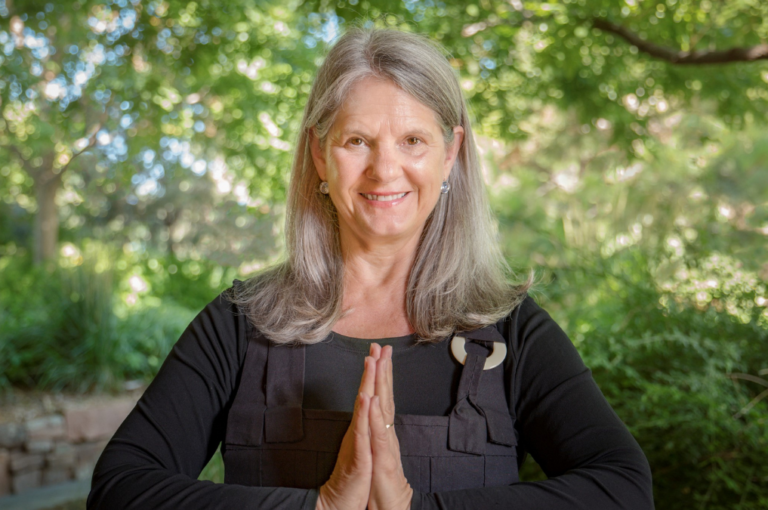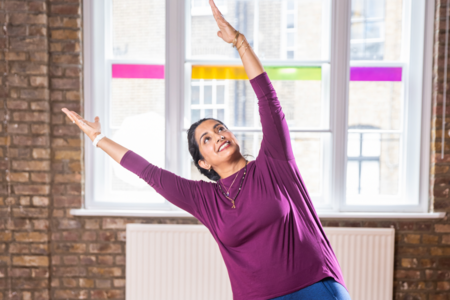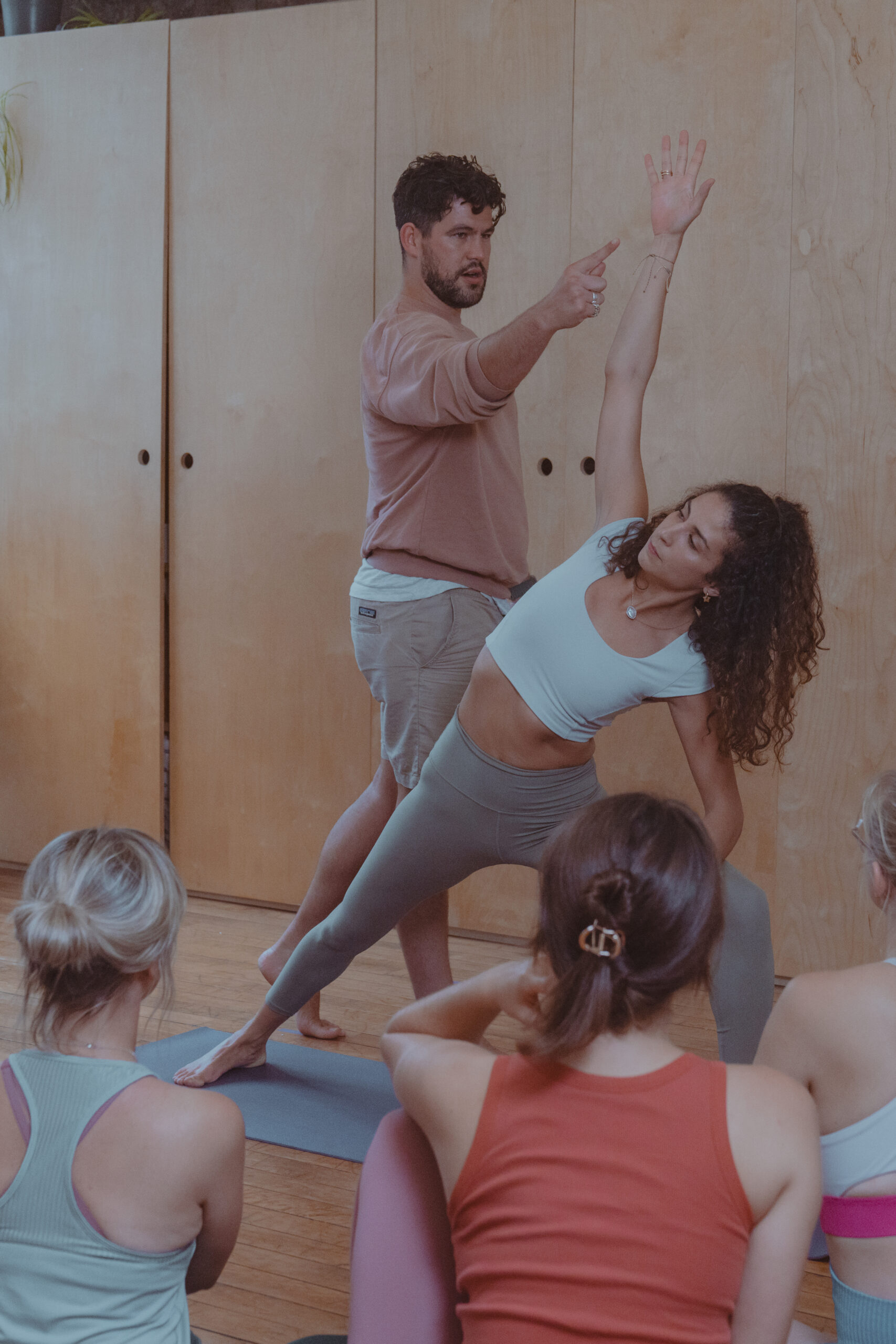Growing up in Seattle, Washington my family would often see people in the local parks – mainly hippies or Asians — doing nothing but sitting still on a rock with their eyes closed. My parents, who were not beatniks or at all hip to Eastern spiritual practices, would make fun of these public meditators saying, “They are contemplating their navels.”
When I was 7, I really tried to figure out what that meant and how you would do it. When I was 15 and they said this, I rolled my eyes. When I turned 18, I went off to college and almost right away started taking yoga classes for P.E.credit. A few years later I developed a daily meditation practice and became one of those people who publicly meditated – at the beach, in the park, on the rocks of Joshua Tree. But no one cared or even noticed because it was southern California in 1971.
Yet, outside of certain hubs of “alternative religions” like Los Angeles or San Francisco, meditating was still considered weird. If it involved chanting or a bearded and robed leader, it was dismissed as a cult that might be creepy and should definitely be avoided.
Of course, all those cautions made me even more interested in alternative religions and exotic gurus, including my college yoga and meditation teacher whose teachings in just two years, unknowingly shaped the rest of my life. I have been a meditator for 50 years.
My practice has evolved and clarified over the decades. It has become the most defining aspect of my life, of whom I am, how I view the world, how I aspire to live in this world.
It’s not easy to use words to explain what meditation is all about. In part, because meditation is a living practice. Like yoga or tai chi or playing the piano you have to do it to understand it.
It’s also not easy to talk about what meditation will do for you. If you meditate for 5 minutes what will you get? Who knows? Could you say that if you lifted weights for 5 minutes or rode a stationary bike for 5 minutes, you would get a specific result that is the same for every person? Nope. Same with meditation.
So let’s talk about What Meditation Is not!
1. Meditation is not transactional
Meditation is a process, not a do-this-to-get-that kind of barter. Instead of the consumeristic/materialistic approach of a quick fix or band-aid, meditation is a practice of getting familiar – with your hopes and fears, your habitual responses to certain situations, and your innate potential for shifting habitual scenarios toward more positive directions.
2. Meditation is not relaxation
Relaxation occurs when your mind is at rest and the physiological functions that consume energy slow down. Conversely, in meditation, your mind may feel spacious but you are awake and consciously present.
That being said, meditation does offer certain grounding benefits. It helps you grow your innate capacity for being stable in unexpected situations. Meditation develops clarity, your ability to see things as they are and to have the strength of mind to stay in the moment instead of emotionally running away or acting out. These benefits: stability, clarity and strength are part of who you are already, and the practice helps you become familiar with them, in turn, being able to call on these qualities whenever you need them.
3. Meditation is not about having no thoughts on the cushion
Meditating without thoughts is like doing yoga without a body. Thoughts are the raw material that we are working with when we meditate. We don’t want to get rid of our thoughts but we do want to develop a new relationship with them.
4. Meditation is not easy for everybody except you
It is understandable that you might think this thing called meditation is just not for you even though it seems like it is easy for everybody else. The main problem is that you don’t know how to do it. There is a simple, specific technique for mindfulness meditation that gives you something to do with your mind. In this way, your own mind becomes interesting. There are also instructions for how you can move your body in certain relieving ways when necessary. There are guidelines for how long to sit in meditation and how often. Once you are on a real program, meditation becomes much more than sitting still with a smile of bliss. It is a way to growing your capacity for insight and compassion. As they say, knowledge is everything!
5. Meditation is not self-improvement
The Buddhism approach to meditation and all dharma practice is that everyone is born with Basic Goodness. Primordial Wholesomeness. This is not something that we have to earn or work for, it is not something that you get from a guru or something that you can ever lose. Basic Goodness is your birthright and at the core of your being. So there is no need for self-improvement. You are already good, just as you are.
Upcoming Mindfulness Meditation course with Cyndi Lee
online mindfulness meditation teacher training + immersion: level I
Wed, 11 January 2023 – Wed, 15 February 2023 | 18:30 – 20:30
online mindfulness meditation teacher training (to teach groups): level II
Sat, 4 March 2023 – Sun, 12 March 2023 | 15:30 – 18:30
Cyndi Lee is the first female Western yoga teacher to fully integrate yoga asana and Tibetan Buddhism in her practice and teaching. Founder of NYC’s OM Yoga Center (1998-2012), a mecca for yogis worldwide, Cyndi is one of the most influential international yoga teachers and has trained thousands of yoga teachers throughout the US, Asia, and Europe.
Cyndi is an ordained Lay Buddhist Chaplain under the guidance of Roshi Joan Halifax at Upaya Zen Center. Her root guru is the Tibetan master, Gelek Rimpoche. She has been teaching yoga for 40 years and meditation for over 20 years.
Cyndi is the author of five other books including the classic yoga text: Yoga Body Buddha Mind; the The New York Times critically acclaimed May I Be Happy: A Memoir of Love, Yoga, and Changing My Mind, and OM yoga: A Guide to Daily Practice. She is a regular contributor to numerous publications including Yoga Journal, Real Simple and Lion’s Roar.










